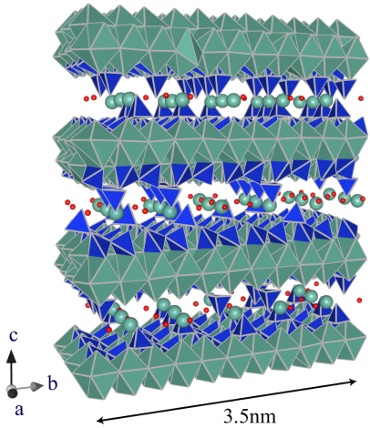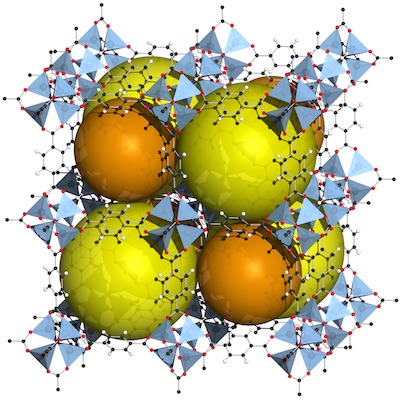Research Summary
My interest ranging from atomic structures to large scale engineering, from theoretical chemistry to experimental physics, from micro electronic to multi-layered mechanics, from … stop.
Hey, at the end its all about understanding nature and technology and to bring them to heel. This is the motivation that really push me to the next level. I started as toddler to disassemble everything around me, just to see whats inside. Over the years, I start to understand how things work together and how they could be manipulated. But not until I had finished my studies, I began to understand how things work even at the atomic level. Now I’m a professional researcher at the Federal Institute of Material Research in Berlin and I'm getting money for my natural interest.
My spare time is really rare, but i spend that time to build custom bikes, develop nice electronic gadgets, building intelligent furniture, inventing machines that make the gearhead’s life more easy and still disassemble everything around me. But finally, everything is just like Cars Sagan once said :
"We are star stuff which has taken its destiny into its own hands." ― Carl Sagan, Cosmos.
Interests
- Material Science (Metal, Ceramics, Glass, Concrete)
- Atomic Structures (Crystaline and Amorphous Material)
- X-Ray Diffraction (Single Crystal and Powder)
- Spectroscopy (Raman, IR, XANES/EXAFS)
- Synthesis of crystaline and amorphous Material
- CAD construction and Electronic Manufacture
Research Projects
-

-

Currently operating power plants must reduce their discharges of CO2 into the atmosphere. Therefore in Europe, research is ongoing into capturing CO2 from flue gases. New commercial power plants equipped with CO2 capture will be commissioned in the UK (“White Rose” CCS Project) and in China. The captured CO2 must then be safely transported to its final destinations, i.e. gas or oil bearing strata. For this purpose, BAM, together with the Federal Institute for Geosciences and Natural Resources (BGR), has carried out successful research within the COORAL joint research project and contributed to the definition of allowable impurities in CO2 . Allowable means that no critical corrosion is allowed to occur in the pipeline over hundreds of kilometres. Renewable power generation and CO2 emission control together will contribute considerably to the Federal Republic of Germany achieving its climate target.
-

Knowledge of the local structure around rare earth elements (REE) in silicate and aluminosilicate melts is of fundamental interest for the geochemistry of magmatic processes, particularly for comprehensive understanding of the partitioning processes of REE in magmatic systems. It is generally accepted that mineral-melt partitioning of REE’s is controlled by temperature, pressure, oxygen fugacity (in case of polyvalent cations) and crystal chemistry but less is known about the influence of the melt composition. The aim of this thesis is to establish a relationship between the variation of the REE distribution with the melt composition and the coordination chemistry of this REE in the melt.
For this purpose, melt compositions used by Prowatke und Klemme (2005) which show a significant change in the partitioning coefficients between titanite and melt exclusively as a function of melt composition as well as haplogranitic and haplobasaltic melt compositions as a representative of the magmatic systems were doped with La , Gd , Yb and Y and synthesized as glass. The melt compositions systematically vary in aluminum saturationindex ( ASI ), from 0.115 to 0.768 for the Prowatke und Klemme (2005) compositions, from 0.935 to 1.785 for the the haplogranitic composition and from 0.368 to 1.010 for the haplobasaltic composition. Moreover, haplogranitic compositions were synthesized with 4 wt% H2O to study the influence of water on the local structure of REE. To gather information about the local structure of Gd, Yb and Y x-ray absorption spectroscopy was used. While extended x-ray absorption fine structure spectroscopy was used to gather quantitative information of the locale structure around the REE, resonate inelastic x-ray scattering (RIXS) and the extracted high resolution x-ray absorption near edge structure (XANES) was used to gather additional qualitative information on the local environment of La, Gd and Yb in the glasses. Additional high temperature in situ Y-EXAFS was performed to prove, if the local structure of Y above transition region (TG) corresponds to the local structure in the quenched melts.
For the analysis of the EXAFS data a new histogram fit was used, which could describe a non-symmetric respectively non-Gauss-shape pair distribution function, as they may occur with a high degree of polymerization or at high temperatures. The results for Y in the Prowatke und Klemme (2005) compositions show an increase of the width and skewness of the Y-O pair distribution function with increasing polymerization, which goes along with an increase of the coordination number from 6 to 8 while average bond length increases by 0.13 Å. A similar trend is also observed for Gd- and Yb-EXAFS spectra. Furthermore, the high resolution XANES for La, Gd and Yb show that structural difference could be revealed, at least half qualitative, in particular for changes of the average bond length to the oxygen atoms. However, compared to the EXAFS method, this method does not provide information about the shape and width of pair distribution functions. The high temperature EXAFS investigation of Y reveal no significant changes in the local structure above TG except for the thermally induced increase in the average Y-O distance. A comparison of the Y-O distances for compositions with an ASI of 0.115 and 0.755 determined at room temperature and TG indicated that the structural changes in the glass along one composition series could be even stronger in the melts.
The direct correlation of the partitioning coefficient from Prowatke und Klemme (2005) with the structural changes in the glass reveals for Y a linear correlation, whereas Yb and Gd show a nonlinear relationship. Because of its ionic radius and charge, the REE is preferably 6-fold coordinated by nonbridging oxygen in low polymerized melts to form stable configurations. In highly polymerized melts with an ASI close to 1, 6-fold coordination is not possible because almost only bridging oxygens are available. The over bonding of bridging oxygen atoms around the REE will be compensated via increasing coordination number and the average REE-O distance. This means that the configuration in the more depolymerized compositions is energetically more favorable, so that the observed variation of the partitioning coefficient results from these differences, which is eventually different for each element. For the haplogranitic and haplobasaltic compositions an increase of the skewness and the asymmetry of the pair distribution function with increase of polymerization of the melt was observed which result in an increase of the coordination number and average distance. This implies, that the respective REE is also getting more incompatible with the increase of the asymmetry in this compositions. Furthermore, the addition of water shows that the melts depolymerize, which resulted in a more symmetrical pair distribution function by which the compatibility increases again.
Finally, the changes in melt composition result in a change of the polymerization of the melt, which has a significant impact on the local environment of the REE. The structural changes can be directly correlated with distribution data, but the trends differ significantly between light, medium and heavy REE. However, this study was able to show what structural change is required to have a significant impact on the partition coefficient. Furthermore, the influence of melt composition on the distribution of trace elements increase with increase of polymerization and should therefore not be neglected.